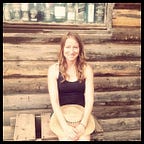Exploring Food Deserts in Colorado
Food deserts are surprisingly common across the United States and represent parts of the country that lack fresh fruit, vegetables and other healthy whole foods. More specifically, these are geographic regions that don’t have a grocery store within a mile. Food deserts are increasingly challenging for low-income populations and for people who don’t have access to a car. Considering the myriad of health issues we are facing in the US, there is a sense of urgency to ensure that people have access to healthy, nutritious food. More importantly, access to healthy food should be a right, not a privilege.
The term ‘food desert’ was not familiar to me until we started our research on this project. It then dawned on me that my hometown is a literal and figurative food desert. I grew up in a beautiful yet isolated desert oasis in southeastern Utah. The newly incorporated town of Bluff has a population of 250 people. The closest grocery store is 26 miles away, but most residents travel 81 miles to access better food options in Colorado.
Food Deserts in Urban Areas of Colorado
I am part of a small group of students actively researching food deserts near Denver. Our goal is to better understand the current organizations working in this space and to explore potential solutions to this problem.
Elyria-Swansea and Globeville
This week I visited the north Denver neighborhoods of Elyria-Swansea and Globeville. There are more than 10,000 residents in this area, but not a single full-service grocery store. The closest option to purchase food was a ‘Stop and Shop Food Store’ that was more representative of a 7-Eleven than a grocery store. The woman working at the store said that the shop was one of the few places to buy food in the area and that it would close soon due to highway expansion. I attempted to buy a bottle of water, but the store accepted cash only.
The Park Hill Supermarket is located 1.7 miles from the heart of Elyria-Swansea. This was an Asian market, which may not appeal to the masses, but did offer plenty of fruits and vegetables as well as meat and fish. There was also Mexican food truck outside of the market. I didn’t find any healthy restaurants in the immediate vicinity. The readily available options for food were Wendy’s, Burger King and a Mexican Taqueria.
Current Organizations Working in the Area
The GrowHaus is a non-profit indoor farm, marketplace and educational center serving the Elyria-Swansea neighborhood. One of the next steps in our research plan will likely be visiting this facility.
Denver’s Office of Economic Development and Denver Urban Gardens are organizations that are also working on tackling the food desert issue.
Key Takeaways
Elyria-Swansea and Globeville very close to downtown Denver and the surroundings are very industrial. There is a high pollution rate in the neighborhood due to multiple highways and trains intersecting in this space. While I have a better sense of some of the geographical challenges in the area, I’m still lacking insight on how people in the neighborhood feel about the problem and how they are currently addressing it. I’m looking forward to interviewing community members as a next step to get a better sense of how people are being impacted individually.
